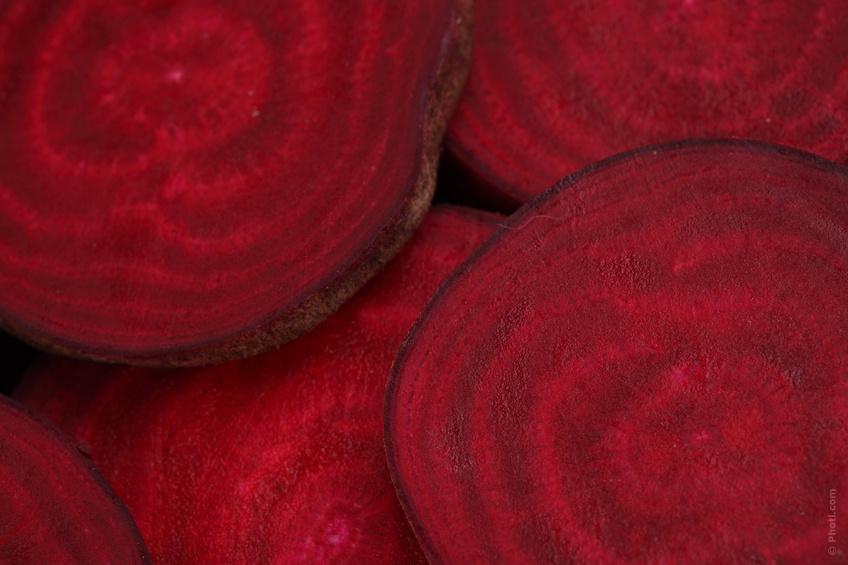Mighty Beets are Back…
Have you ever bought fresh beets? Beets are back ‘in-style’ and add much more to your plate than vivid color. If you have not heard about the health benefits of beets, keep reading…not a fan? Well, maybe that’s because you’ve never tried this hearty root vegetable FRESH. Try ’em the grown-up way (uncanned) and get ready to love a food you never thought you’d like. It’s easy to love fresh beets, and not just for their nutritional advantages. While we often think of beets having a reddish-purple hue, some varieties are white, golden-yellow or even rainbow colored. The sweet, buttery taste of beets reflects their high sugar content making them an important raw material for the production of refined sugar. In fact, they have the highest sugar content of all vegetables, yet are very low in calories.
Peak season for beets is June – October (when they are most tender) and are easy to prepare at home. Pass by blemished bulbs with wilted greens and look for healthier bulbs. You’ll find the prettiest beets at your local farmer’s market. By the way, don’t throw out those greens so fast! They are chock full of nutrients such as beta-carotene, vitamin C, iron and calcium. Greens can be sautéed in garlic and olive oil. Beets are rich in folate, potassium, magnesium and dietary fiber and contain powerful nutrient compounds that help protect against heart disease, birth defects and certain cancers, especially colon cancer.
Preparing Beets: Beet Recipe
Beets can be peeled, steamed, and eaten warm with butter as a delicacy; cooked, pickled, and eaten cold as a condiment; or peeled, shredded raw, and eaten as a salad. Pickled beets are a traditional food of the American South. It is also common in Australia for pickled beetroot to be consumed on a burger.
An increasingly popular preparation method is roasting beets. To roast beets, trim the greens away from the beets (leave about 1/4″), thoroughly clean beets with a veggie scrubber and place in a baking dish. Add 1/4″ of water to the dish. Cover. Place medium beets (4-6 oz) in the oven and roast for 40-45 minutes (a little less or more time for smaller and larger beets, respectively). They’re done when a knife easily penetrates the beet. Allow to cool in the baking dish. Cut away the ends and slip off the skins. Roasted beets are wonderful on their own or dressed with a vinaigrette, and they’ll keep, refrigerated, for 5 days in a covered bowl.
Approx Nutritional Information: 1 roasted beet: 44 calories; Total fat: < 0.5 g; cholesterol 0 mg; sodium 77 mg; Total carbohydrates 10.0 g; Dietary Fiber 2.0 g; Sugars 8.0 g; Protein 1.7 g.












